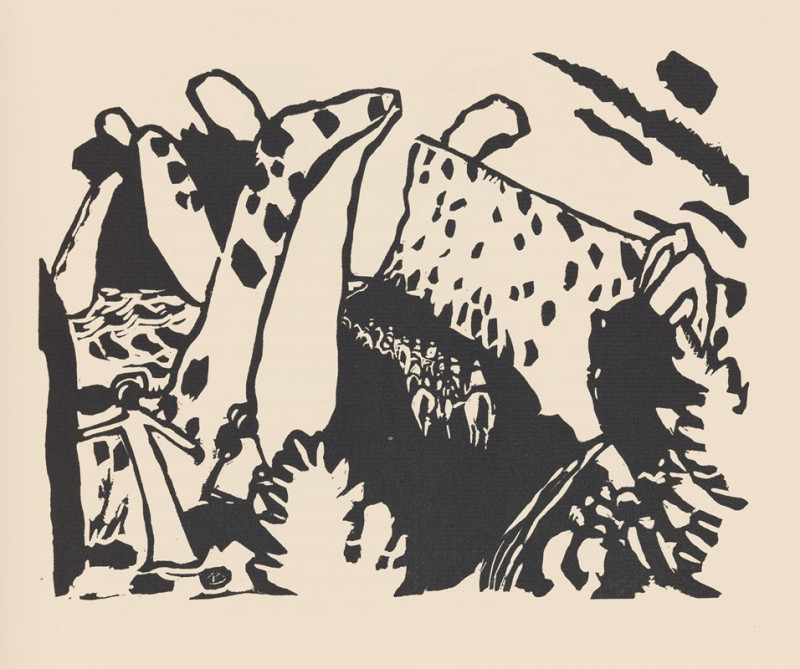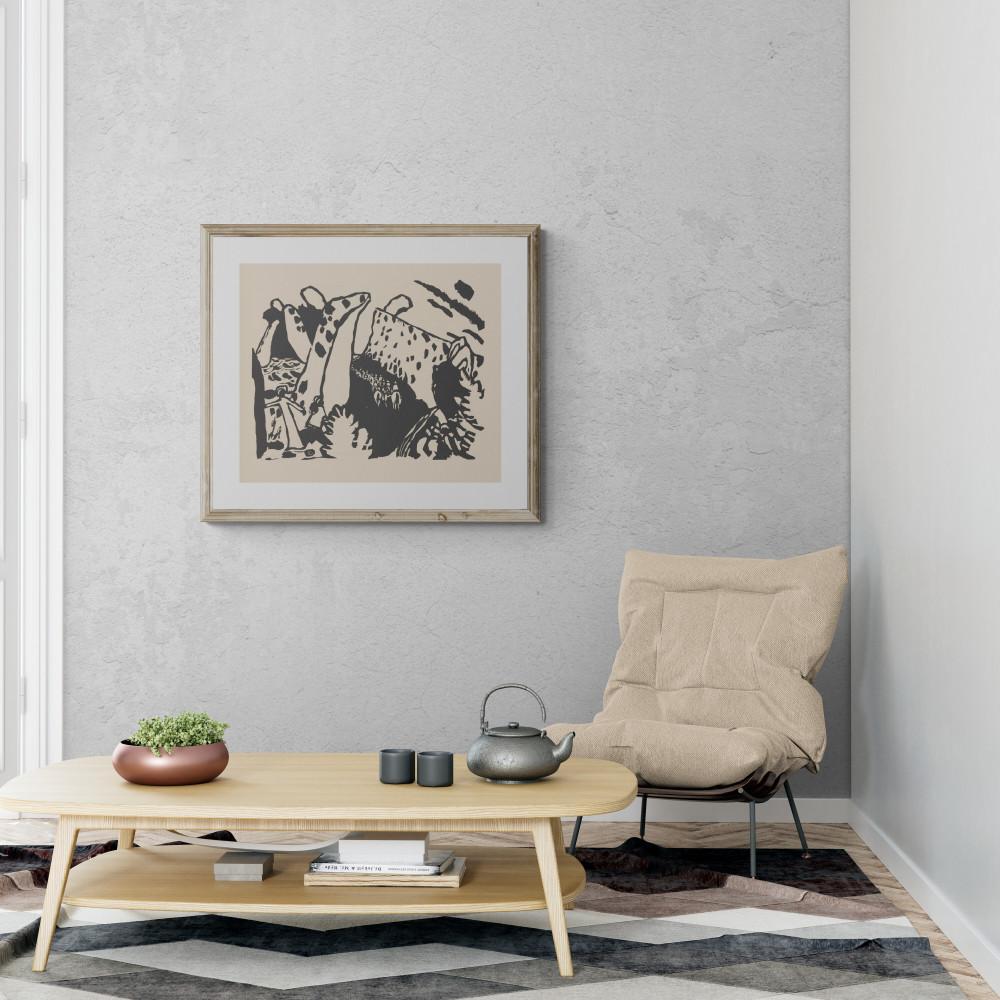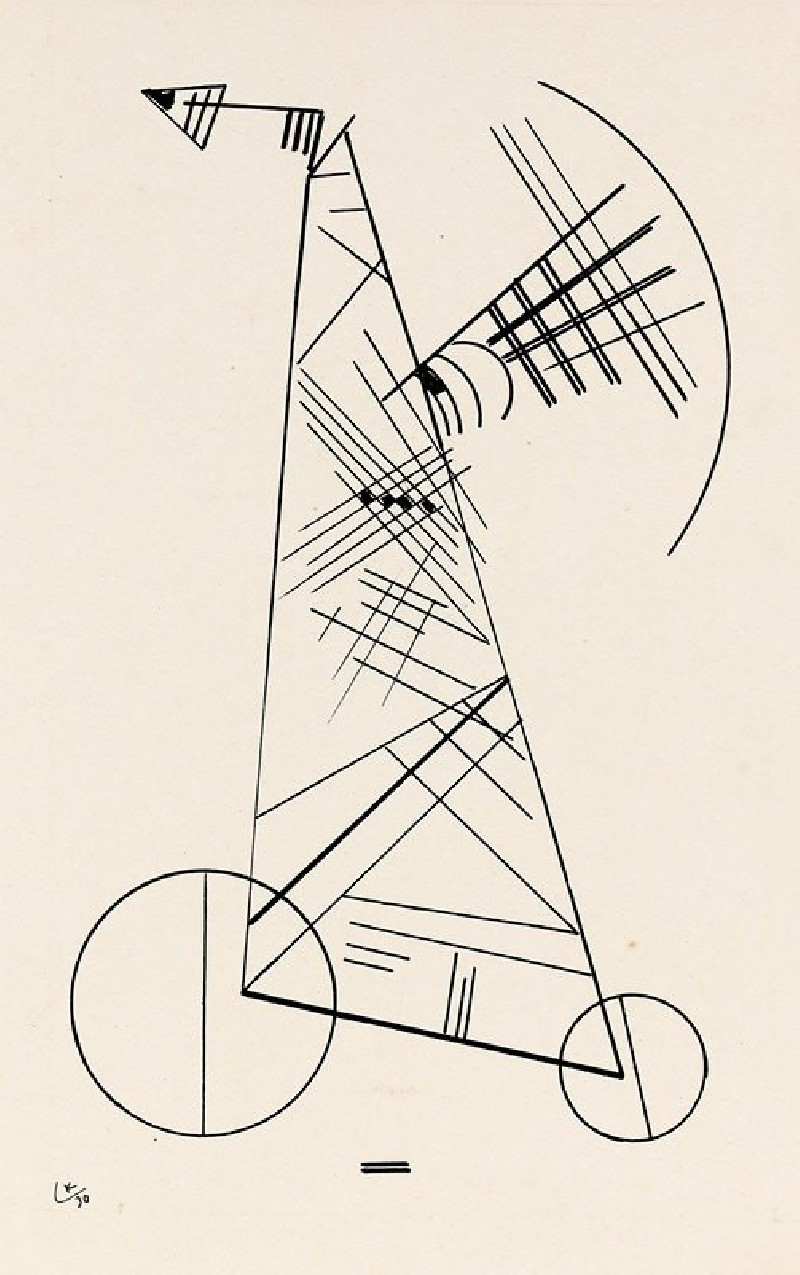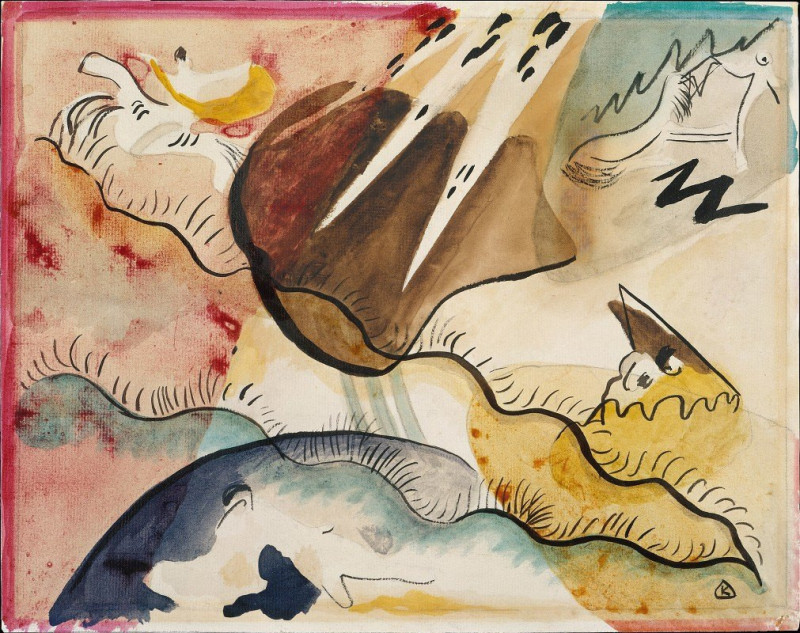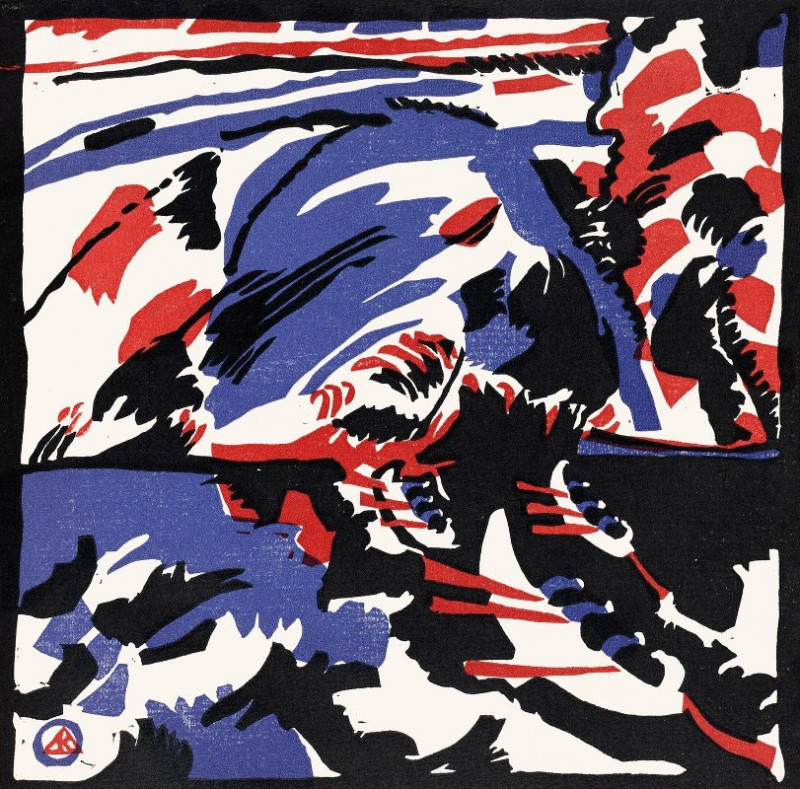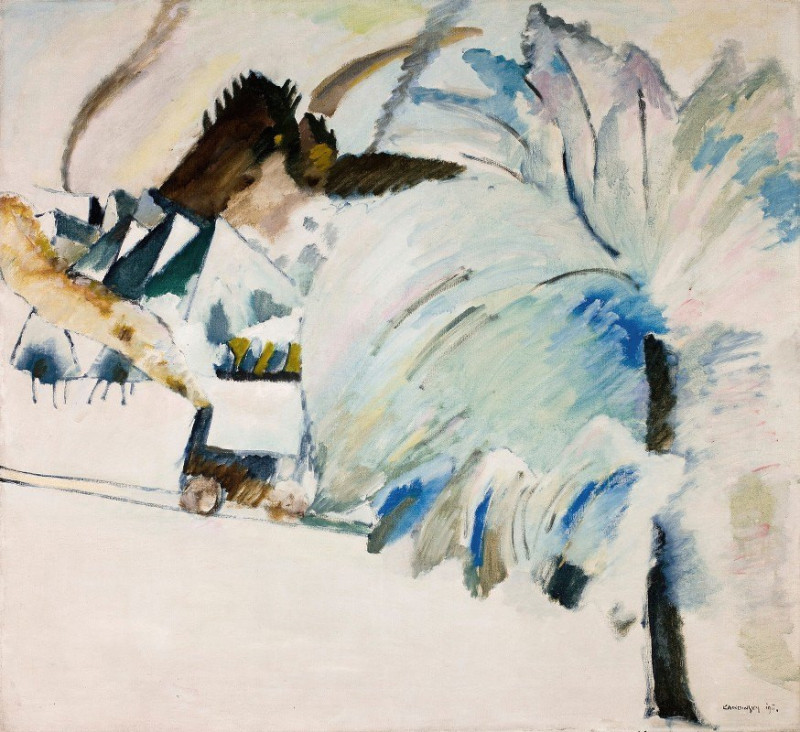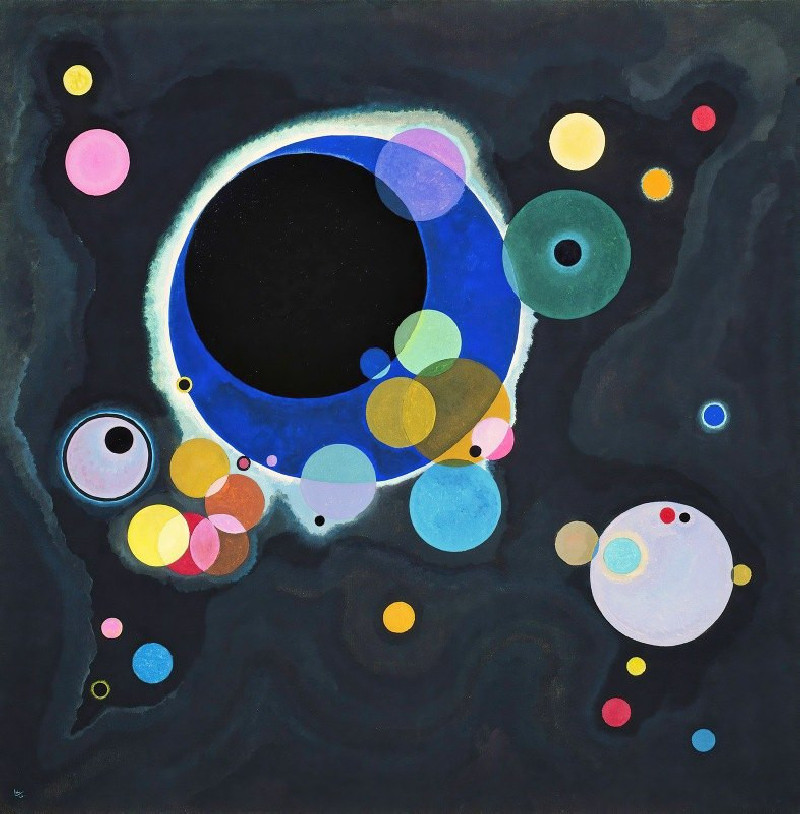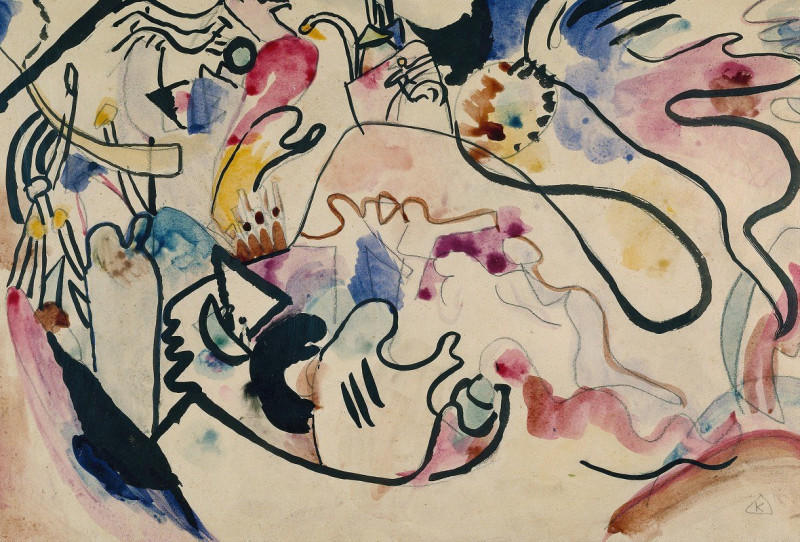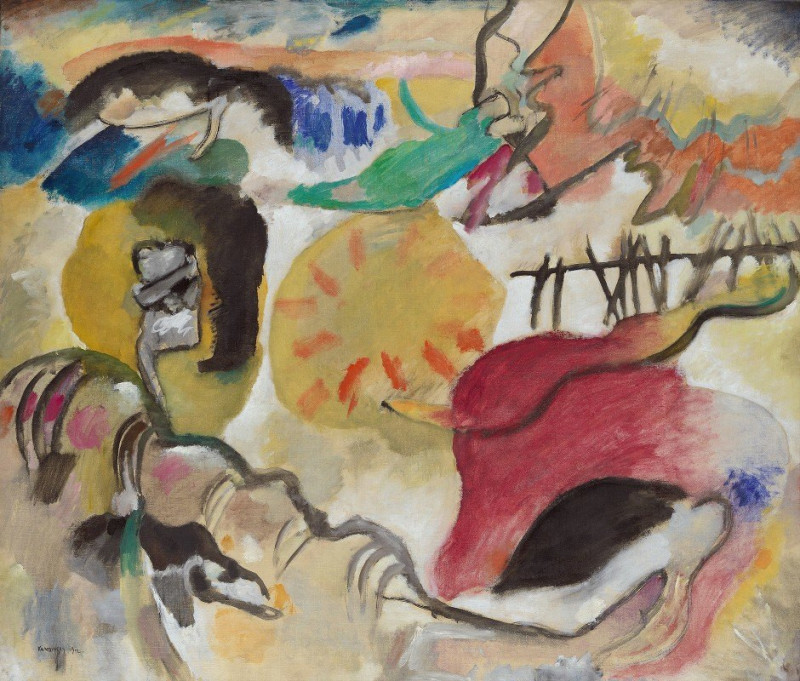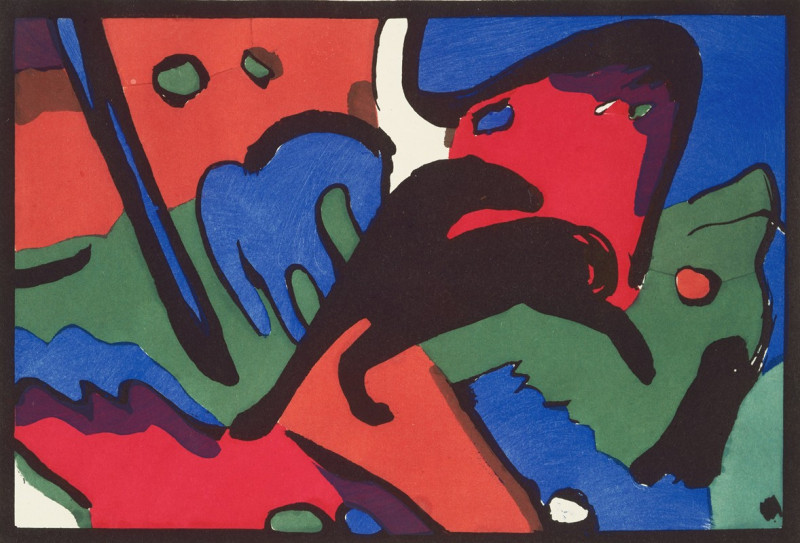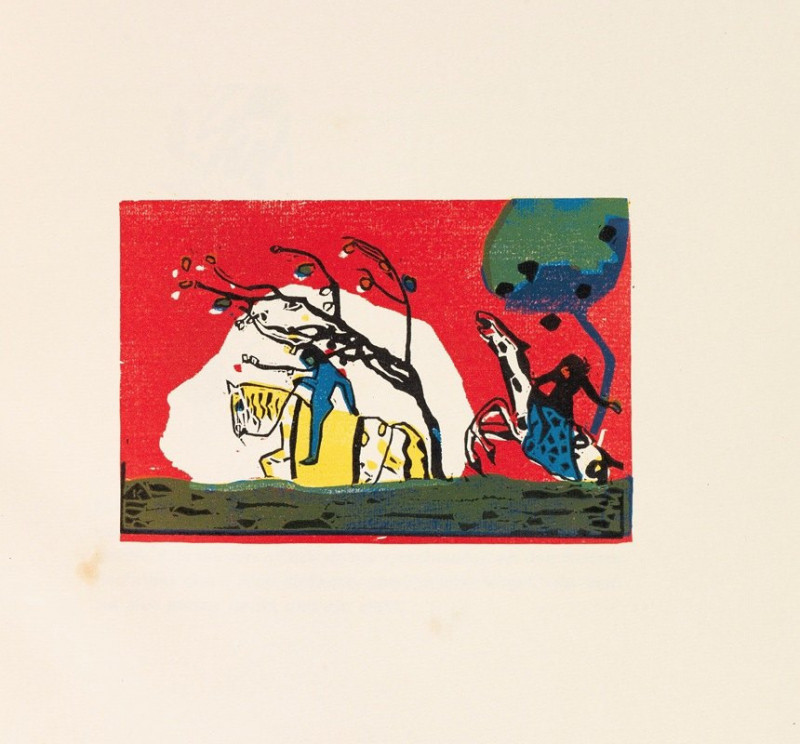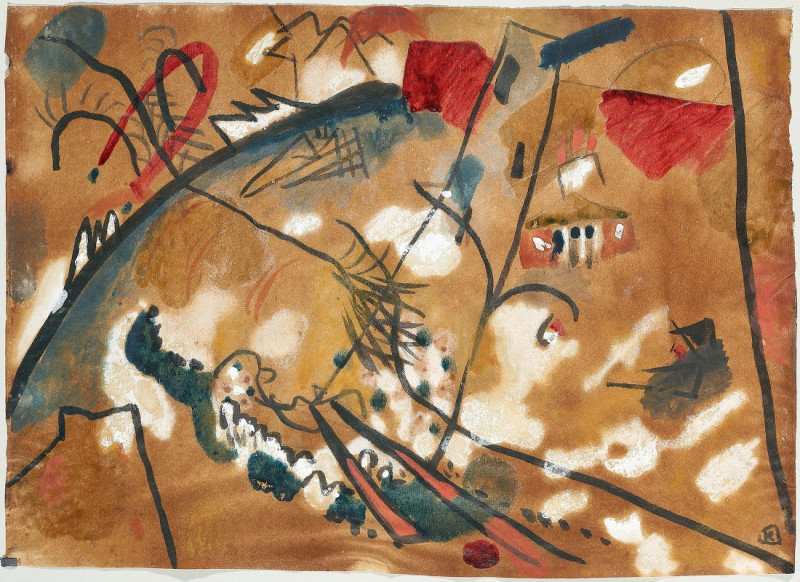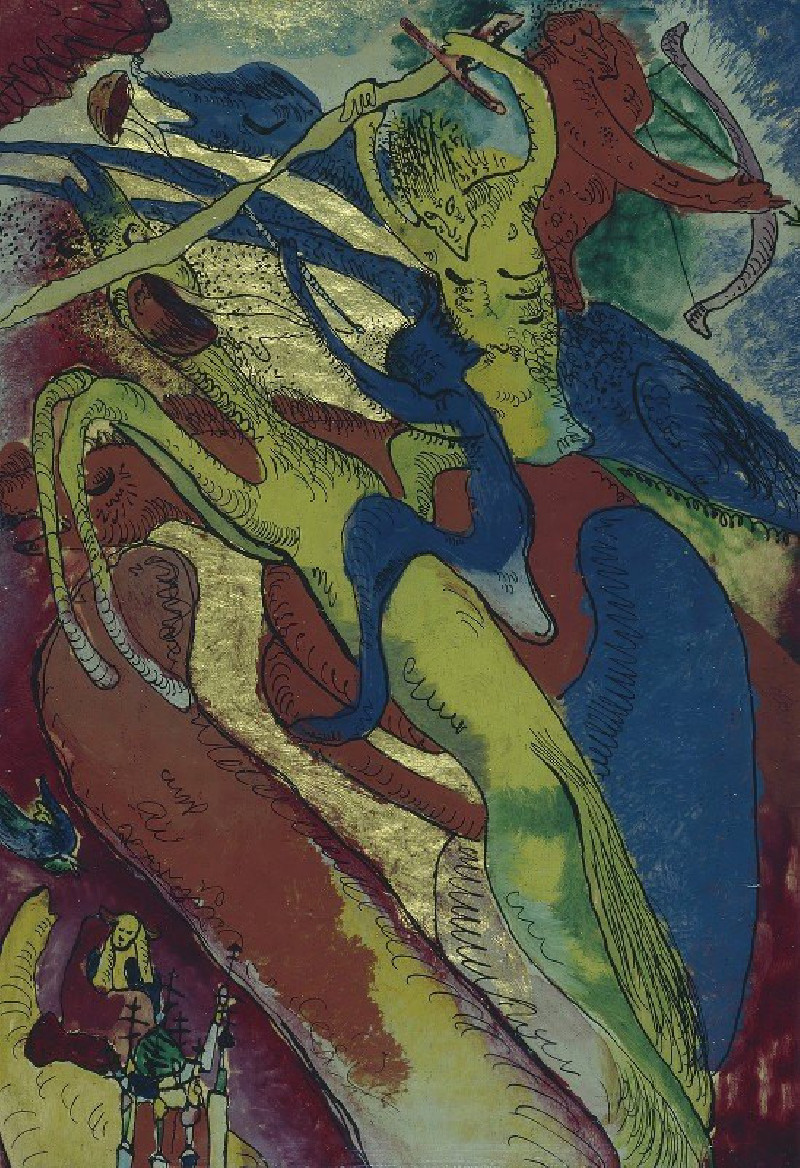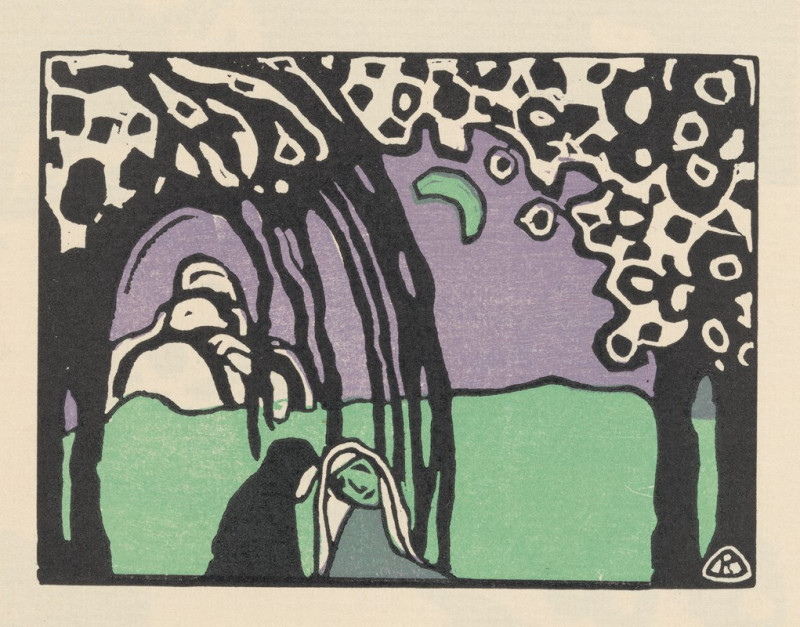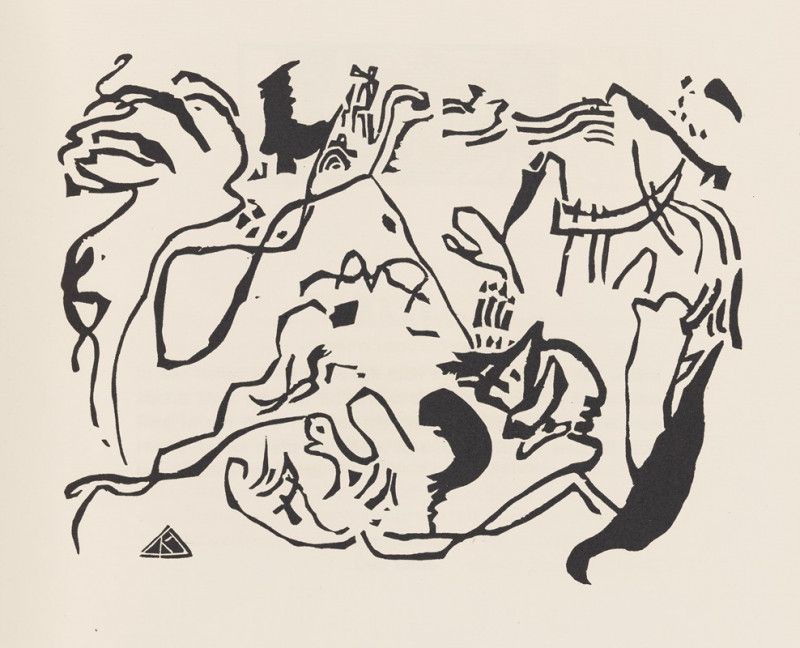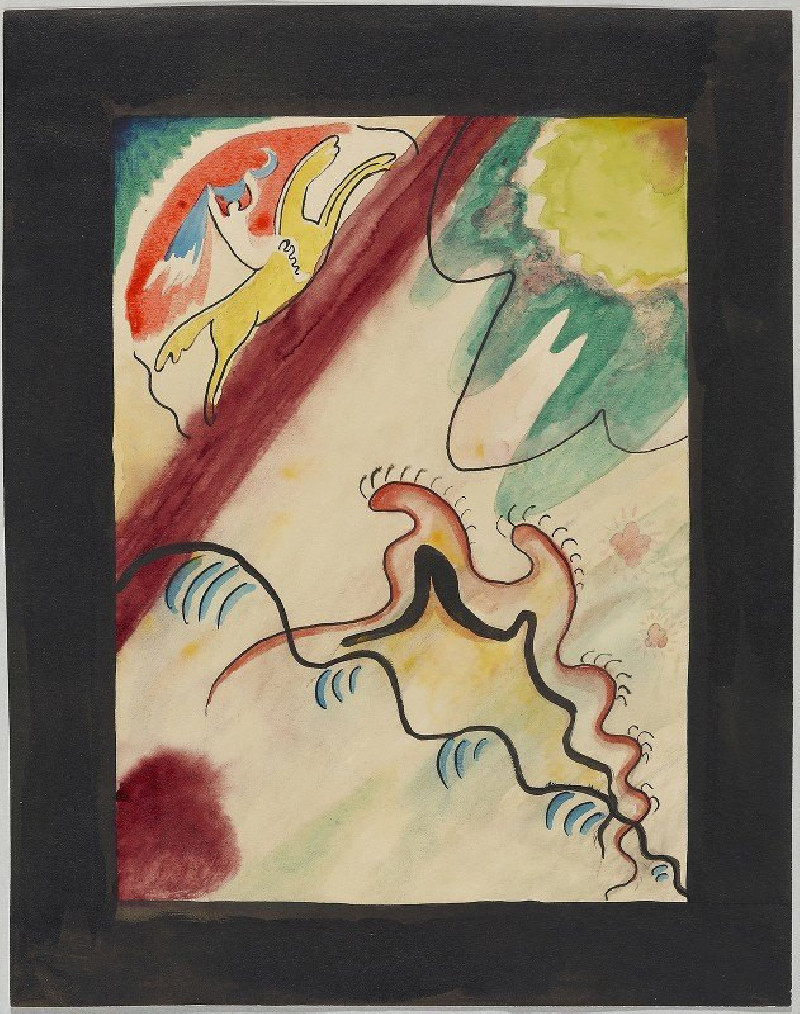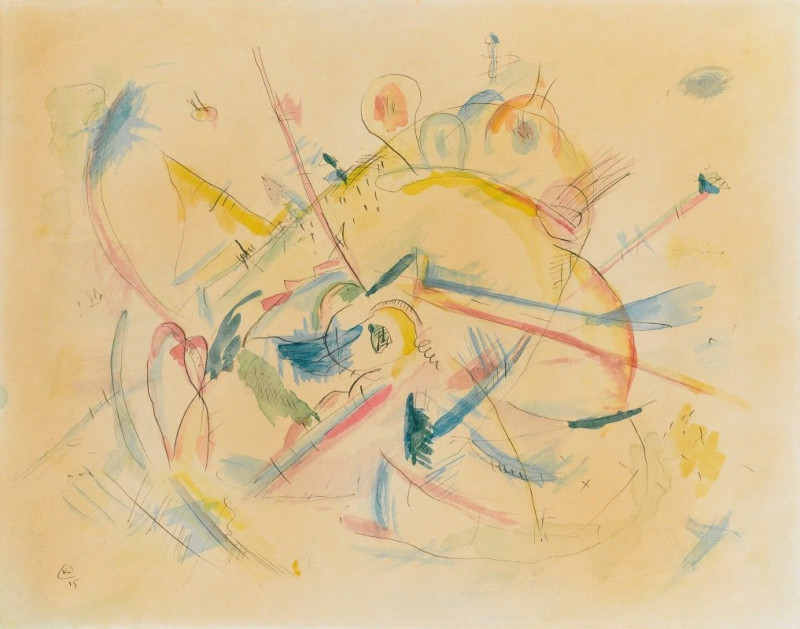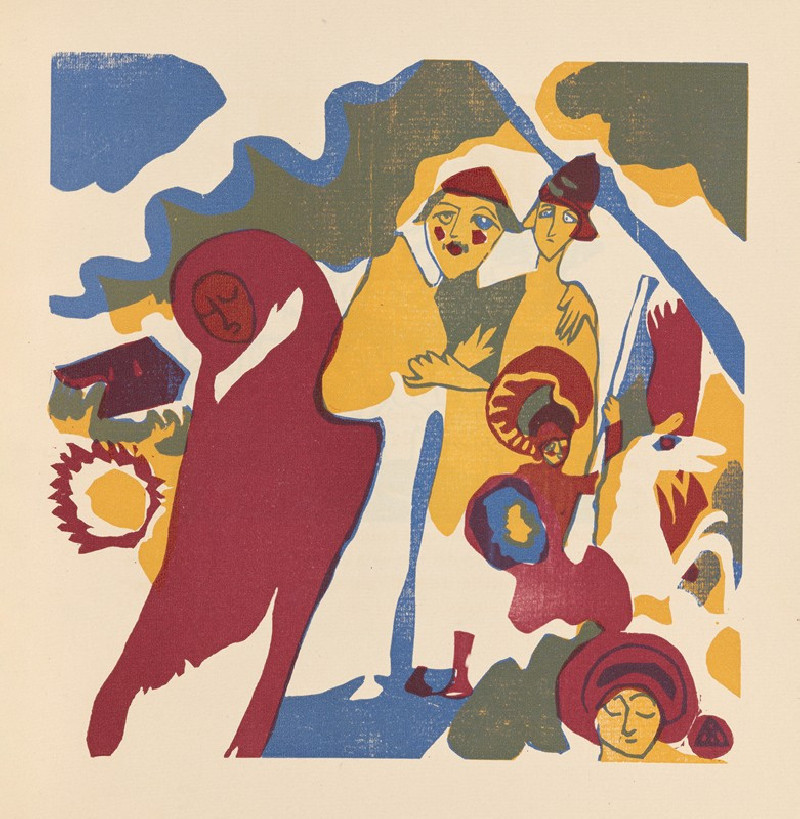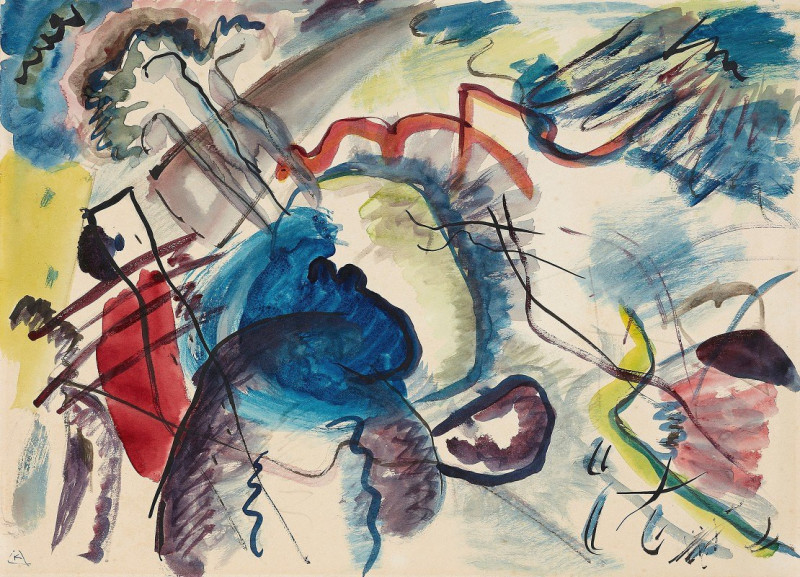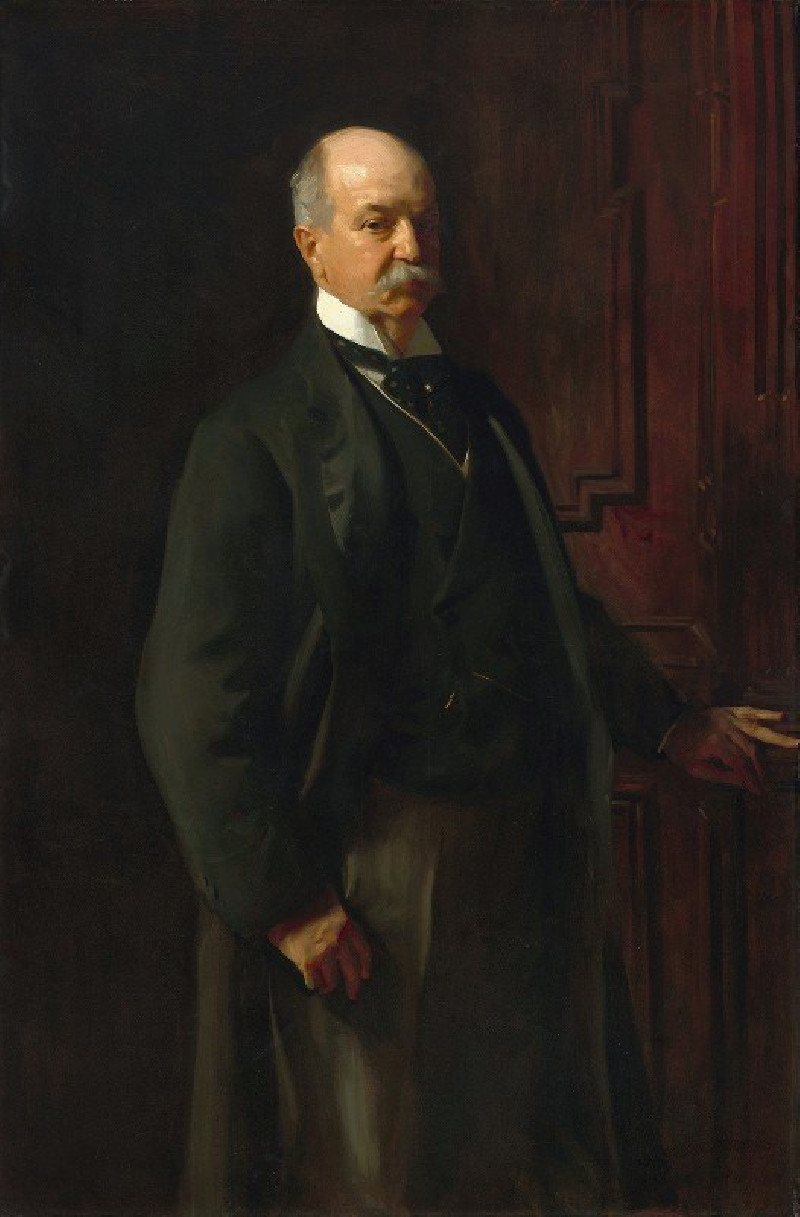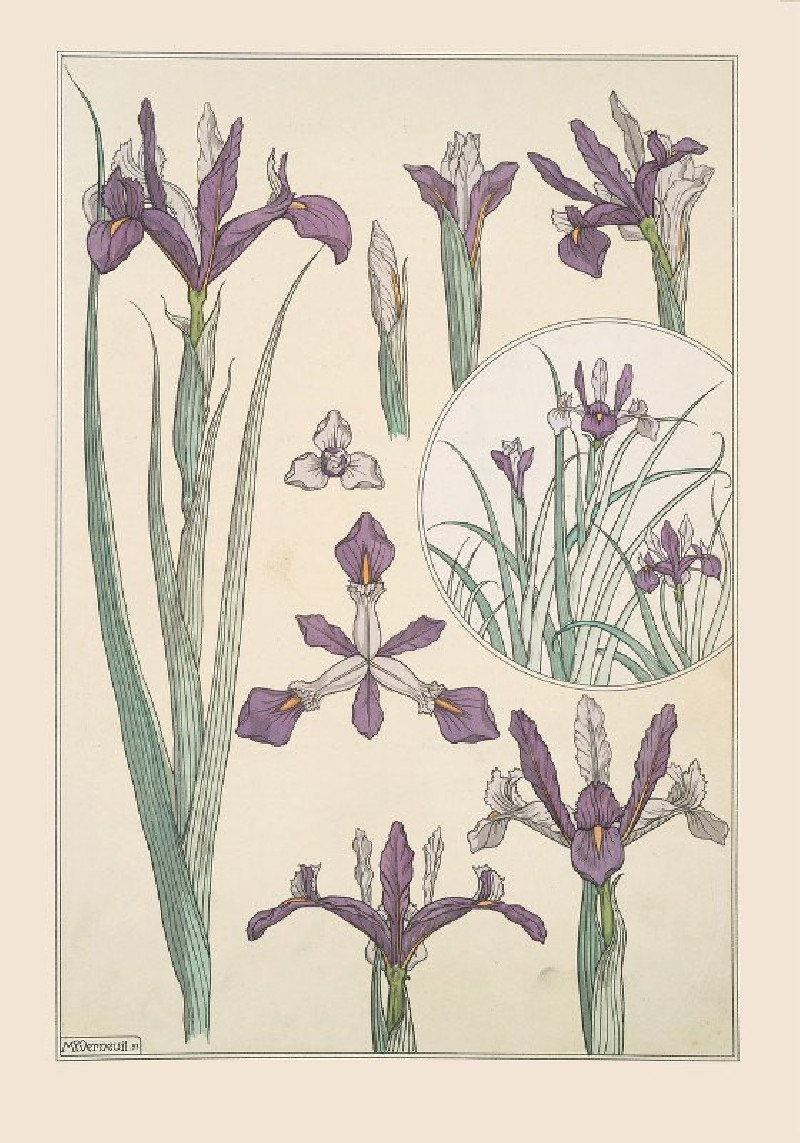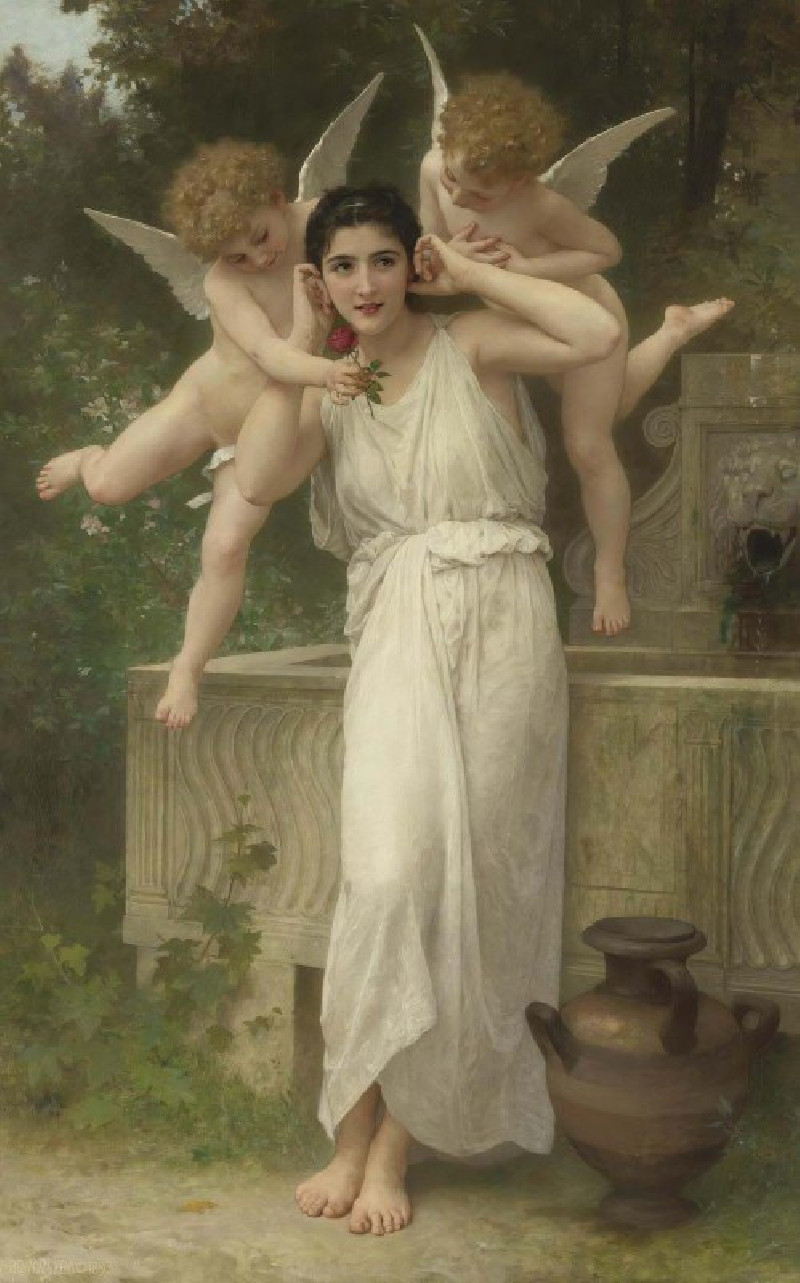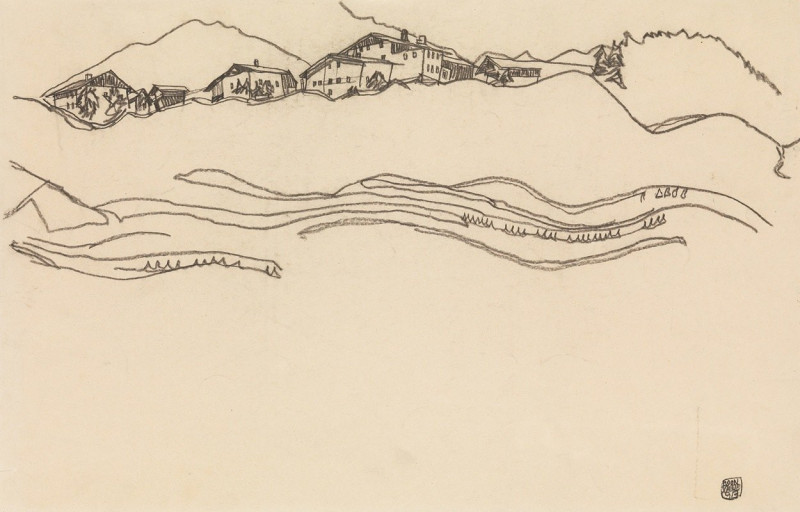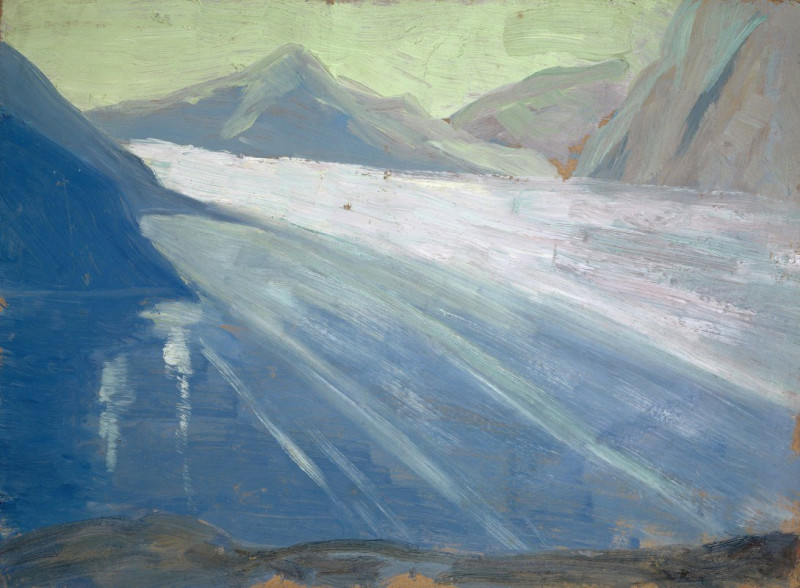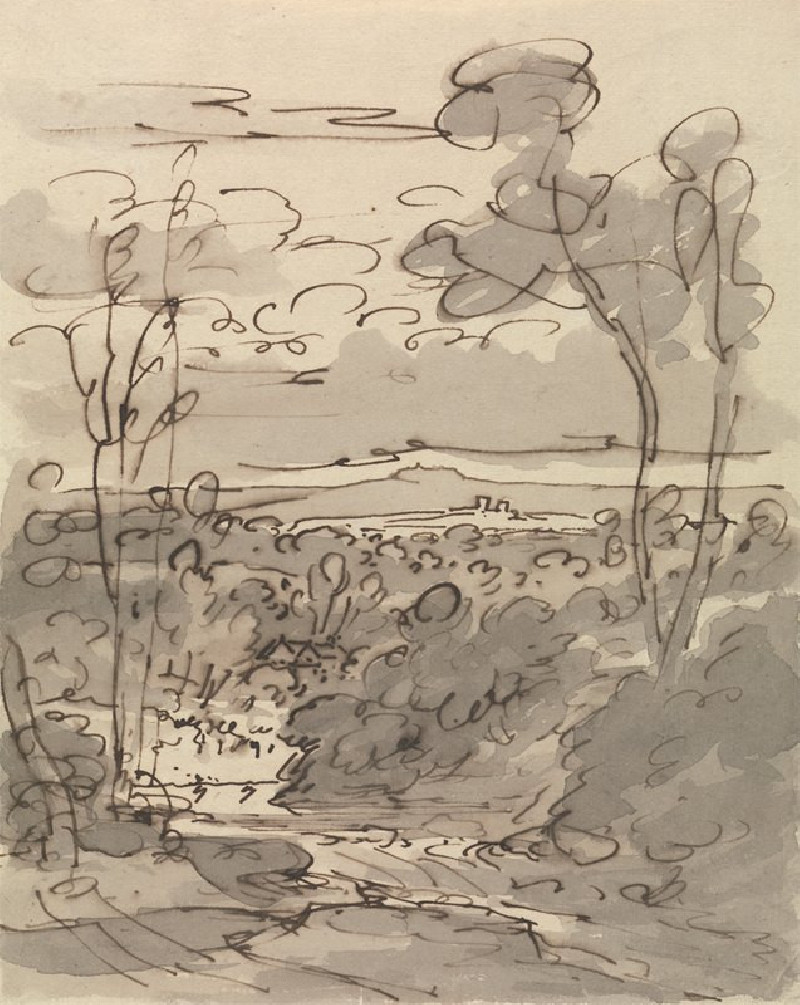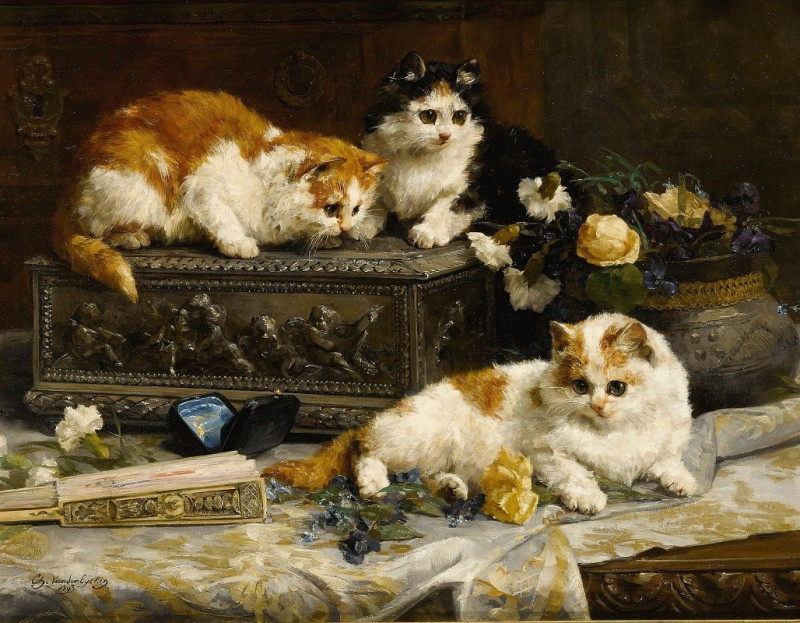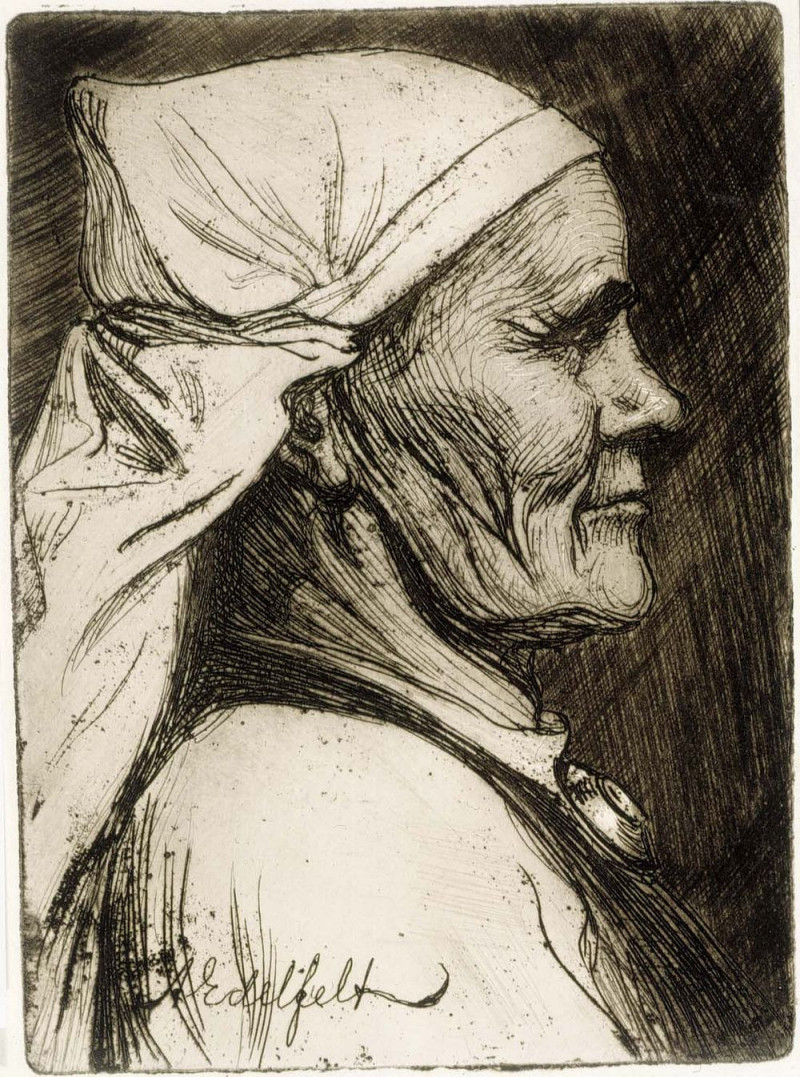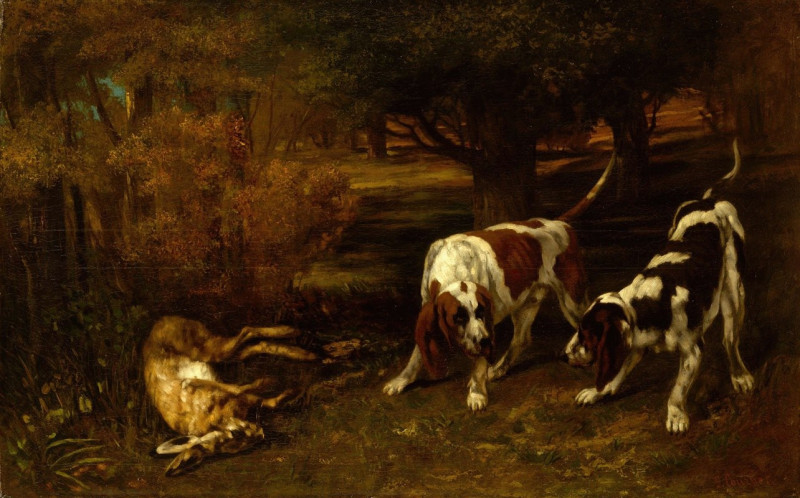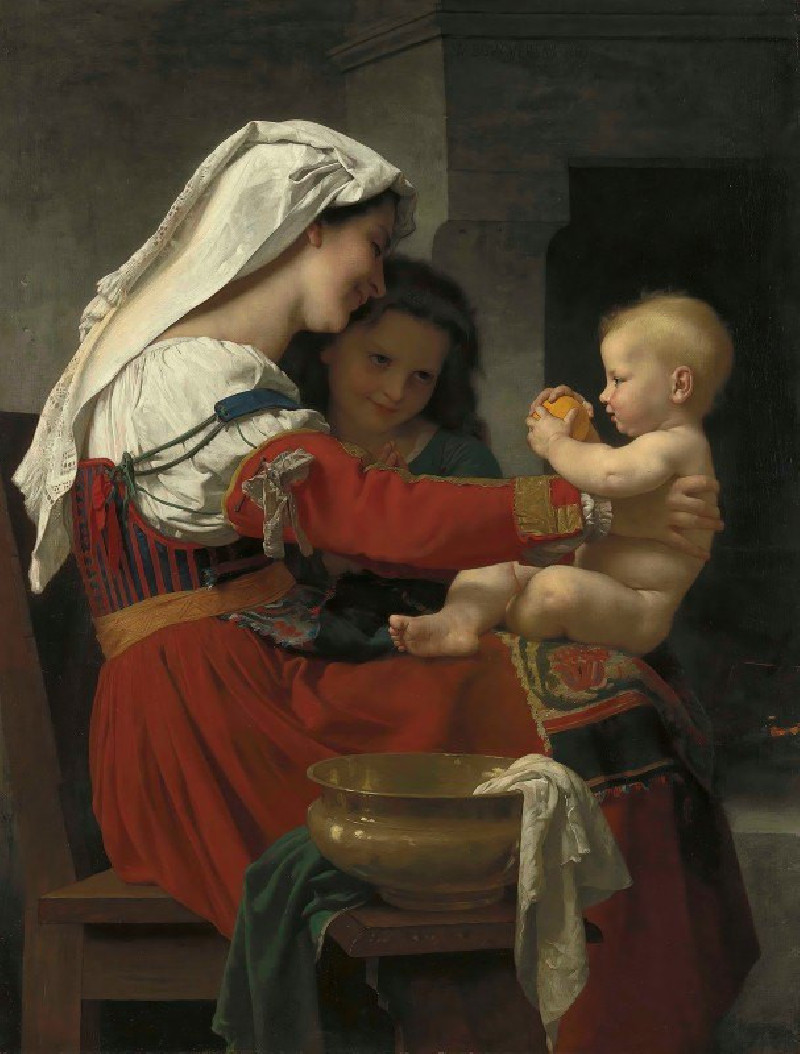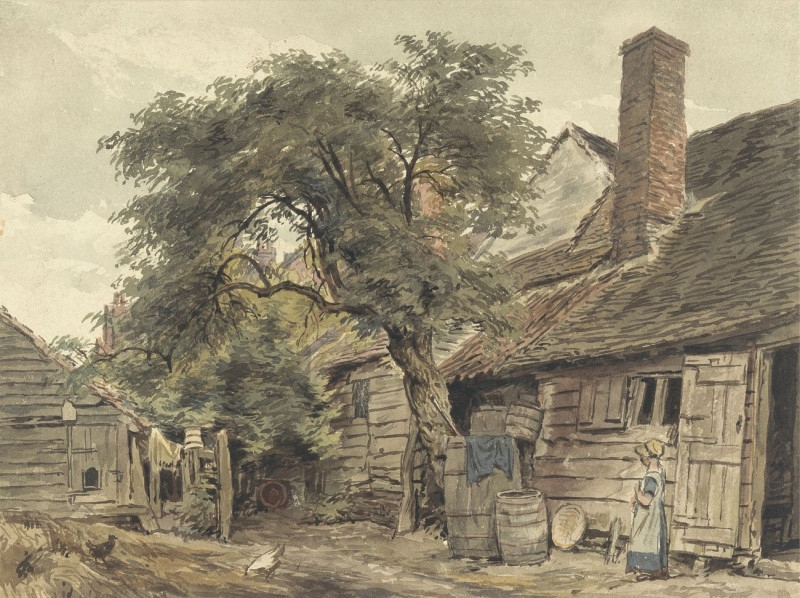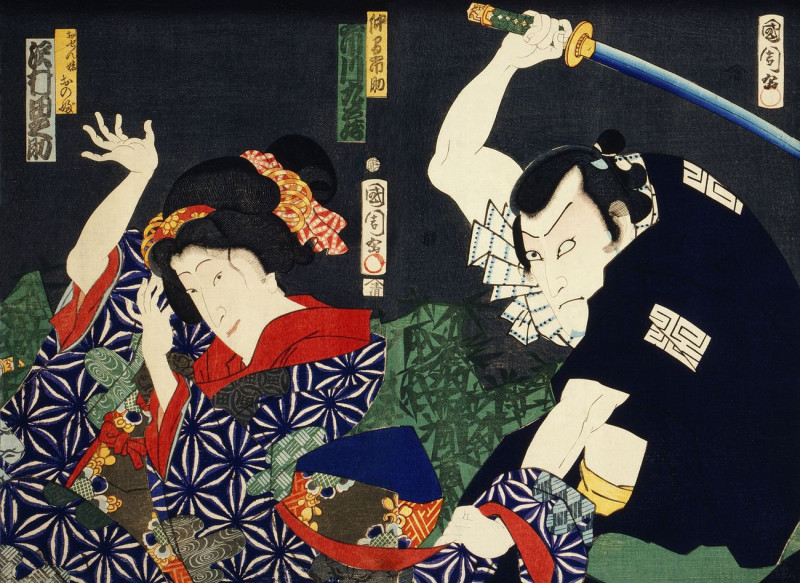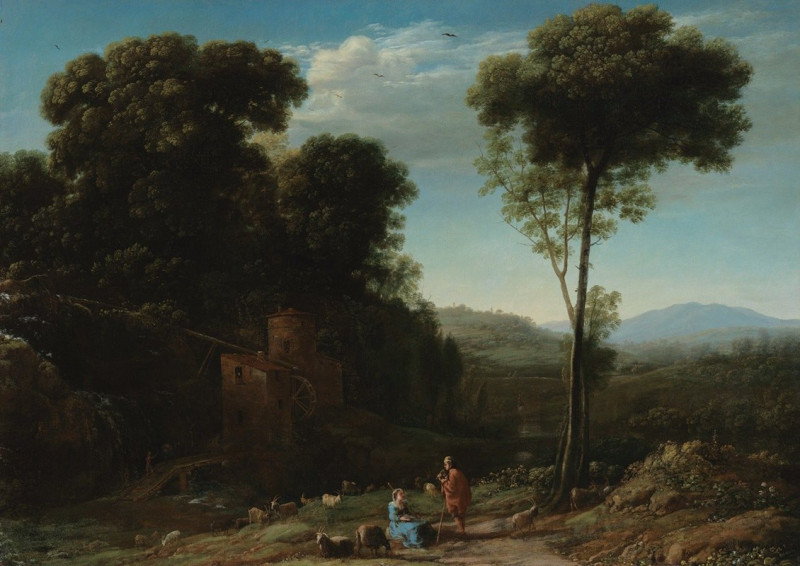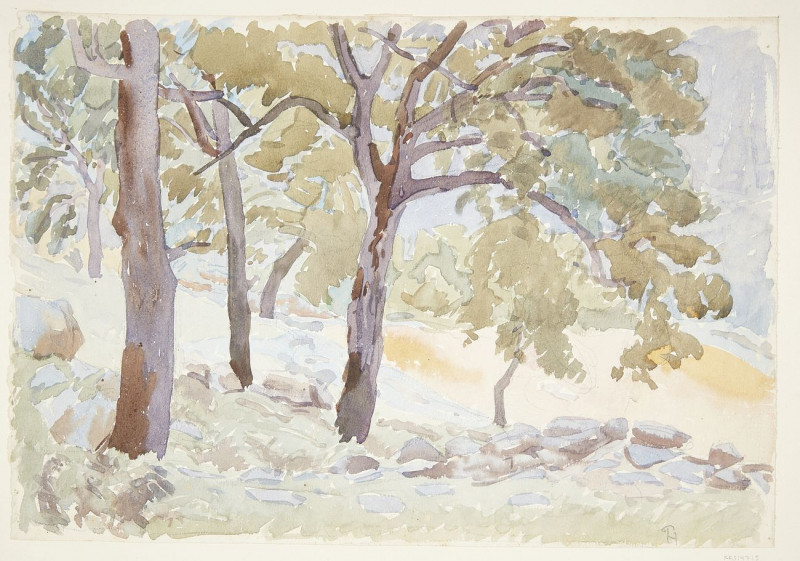Klänge Pl.18 (1913)
Technique: Giclée quality print
Recommended by our customers
More about this artwork
This painting, titled "Klänge Pl.18," by Wassily Kandinsky, crafted in 1913, features an exploration of abstract forms and contrasting tones that evoke a sense of rhythm and visual movement, characteristic of Kandinsky's experimental style during this period. The image is rendered primarily in black on a cream-colored background, using bold, disjointed shapes interconnected to form a dynamic composition.The arrangement of shapes and the stark contrast might suggest the interaction of sound and visual art, which Kandinsky deeply believed in. He was interested in the idea of synesthesia, a sensory cross-over where, for instance, sounds evoke visuals. This way, the scattered forms, varying in size and openness, might be interpreted as visual representations of musical sounds or vibrations.Elements in the painting are at once both distinct and overlapping, creating a layered effect that pulls the eye from one segment to another, much like a melody might lead a listener through a musical piece. The abstract nature of these forms leave much to personal interpretation, inviting the viewer to engage imaginatively with what might be depicted, ranging from elements of nature to abstracted symbols.Overall, the piece is reflective of Kandinsky’s move towards complete abstraction and his belief in the emotional and expressive power of color, shape, and line independent from the natural world.
Delivery
Returns
Picture in the interior
Technique
Giclée quality print
Wassily Wassilyevich Kandinsky was a Russian painter and art theorist. Kandinsky is generally credited as the pioneer of abstract art. Born in Moscow, Kandinsky spent his childhood in Odessa, where he graduated at Grekov Odessa Art school. He enrolled at the University of Moscow, studying law and economics. Successful in his profession—he was offered a professorship (chair of Roman Law) at the University of Dorpat today Tartu, Estonia)—Kandinsky began painting studies (life-drawing, sketching and anatomy) at the age of 30.

